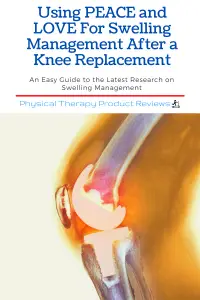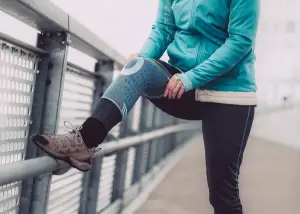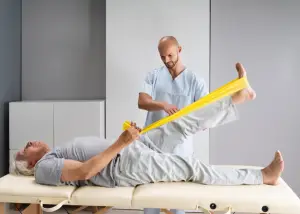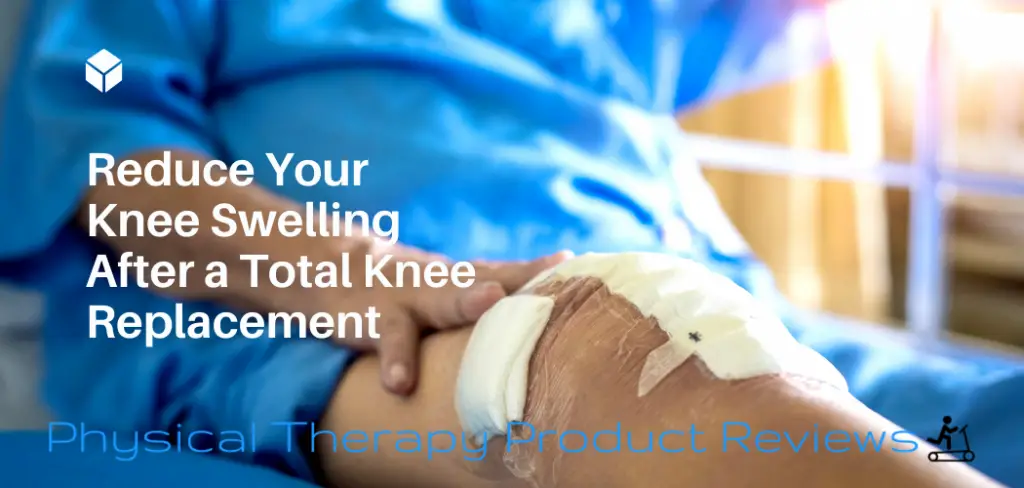 It was your first night in your own bed after having a total knee replacement. The sun happily pokes through the blinds as the birds sing a melodious tune that allows you to gently wake up. It’s such a lovely morning that you almost don’t notice the nagging pain and the enormous amount of swelling that has occurred whilst you were in dreamland.
It was your first night in your own bed after having a total knee replacement. The sun happily pokes through the blinds as the birds sing a melodious tune that allows you to gently wake up. It’s such a lovely morning that you almost don’t notice the nagging pain and the enormous amount of swelling that has occurred whilst you were in dreamland.
You may be wondering how you are going to deal with the swelling and pain after your total knee replacement surgery. Fear not, there are ways to combat the swelling and reduce the pain so you can recover faster. Continue reading for helpful information on reducing the swelling after a total knee replacement.
Out With The Old And In With The New for Swelling Management
With any surgery there comes a certain amount of pain and swelling associated with it. A total knee replacement is no exception. You are going to experience some swelling and discomfort afterward. Some people may experience more than others.
Until recently the standard approach to reducing swelling was a method called R.I.C.E. If you are not familiar with that term it stands for:
- Rest
- Ice
- Compression
- Elevation
The R.I.C.E method has been used for years but as time has passed, newer and more improved methods have been created to reduce swelling and improve the recovery process.
What Your Knee Needs Now is P.E.A.C.E and L.O.V.E
After reading this heading, you may be wondering how the heck P.E.A.C.E and L.O.V.E are going to do to reduce your swelling and end your pain. You may be thinking this sounds a little backward at first, but let’s begin by explaining what these acronyms mean.
Protect | Load |
Elevate | Optimism |
Avoid Anti-inflammatory Modalities | Vascularisation |
Compress | Exercise |
Educate |
Below is a breakdown of what each letter of the acronym means and how it can benefit you.
Once you have your total knee replacement you will need to practice P.E.A.C.E for a few days.
__________________________________________________________________________
Protect
Try not to use movements or participate in activities that are going to increase your pain for the first few days after surgery. Take it easy and allow your body some time to recover from the shock of having major surgery.
Elevate
Keep your knee elevated above your heart as much as possible to reduce swelling. This means way above your heart level with multiple pillows, not just elevated on the leg rest of the recliner.
Avoid Anti-inflammatory Modalities
Try not to take anti-inflammatory medications unless prescribed. The reason for this is because anti-inflammatory medications such as ibuprofen or naproxen can actually slow the healing process of the soft tissue. Also, avoid using ice too much for the same reason.
Compression
It is highly recommended that you wear a compression sleeve or some type of elastic bandaging to reduce the swelling caused by edema (the fluid that collects in the soft tissues). Most of the time the hospital will provide you with compression stockings or bandaging, if not they can be purchased fairly inexpensively at any pharmacy or medical supply store. You can also use a knee compression sleeve after the first few weeks to help with pain and swelling.

Educate
Instant gratification is the name of the game these days. When you want something, you want it NOW! Nobody likes to wait and many times people try to take the seemingly easy route to mask the pain with passive treatments that temporarily relieve some pain and swelling; avoid these quick-fix treatments and focus instead on the things mentioned above. By using passive treatments to try to treat your immediate pain you can cause longer healing times and codependency on medications and treatments.
Once you have practiced P.E.A.C.E and survived the first few days after your total knee surgery it is time to move on to L.O.V.E because, after all, love is the cure to everything.
____________________________________________________________________________
Load
This simply means that you need to let your body tell you when you are ready to add weight to your knee and perform certain activities. Try to apply a little more pressure and weight every day, but don’t overdo it. See if you can load the muscles and tendons with light exercises.
It is normal to experience some pain and discomfort, but if you are at the point of tears it is time to rest.
Optimism
Most people seriously underestimate the power of the mind. If you start with the attitude that this is negative that is the type of result you can expect. If you have stinkin’ thinkin’ you are not going to fare well during the recovery process. Adversely, if you have a positive, can-do attitude you will see a significant improvement in your recovery and overall life.
Vascularisation
This is just a fancy way of saying that you need to find some activities and exercises that will keep your cardiovascular system pumping and flowing. The better your blood is flowing the faster you will heal. The perks of beginning cardiovascular exercises early on are that you recover quicker and require less pain medication so you can get back to your regular activities.
Exercise
As stated above, you need to find activities to keep that blood flowing. Exercises that focus on the range of motion, muscle activation, strengthening, or a recumbent bike are the best ways to get back into shape and recover more quickly.

In the End - L.O.V.E Wins
The ways we treated swelling in the past have blossomed into new progressive methods of thinking and have given us a better way of approaching recovery after a total knee replacement. Follow the helpful tips in this guide and you will be sure to keep the swelling down for a speedy recovery. Remember to stay positive and that L.O.V.E always wins.
Works Referenced:
https://www.sportsandspinal.net.au/early-injury-management-peace-love-not-harm/
Other Great Rehab Related Articles
How to Stay Active After Cervical Fractures: Expert Tips and Advice
Dealing with Painful Stairs After Ankle Replacement Surgery
Walking After a Total Ankle Replacement: Tips for a Successful Recovery
Exercises While Non-Weight Bearing After Ankle Replacement: Elevation, AROM, Leg Raises, and More
Ankle Pain with Stairs: Causes and Home Treatment Options
5 Common Mistakes You’re Making After an Ankle Sprain
Disclaimer: The information provided in this post is for educational purposes only. This is not a substitute for a medical appointment. Please refer to your physician before starting any exercise program.






